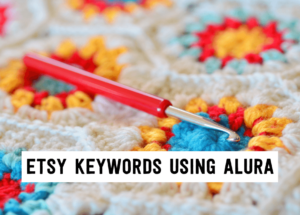
How to find the best Etsy keywords in 3 simple steps using Alura
If you want to be found in search results on Etsy, you need to optimize your product listing for SEO. And if you want to
join
join
One of the common struggles I see handmade shop owners face is the switch from “hobby” to “business.”
Once you decide to take your hobby and make it a business, and you set up your store and your product listings and all that, you might not “feel” like it’s a business just yet . . .
. . . you just keep working at it, doing what all the handmade business guides say to do – marketing and planning and the like –
. . . yet you’re not quite sure what to do to make that FULL transition from hobby to handmade business.
And you wonder “When will my business start to feel like, and run like a business?”
And what you might miss is that many times the missing piece of the puzzle isn’t your marketing, or your strategy, or anything tangible like that: it’s your mindset.
And that is why I wrote this article. I want to show you this very easy mindset trap that many makers fall into and get stuck in, and tell you how to get out of the trap and help your handmade business succeed.
So, ready? Let’s dive in.
Today we’re going to talk about the very important identity shift that needs to happen when you transition from a hobby to a business, and how you can’t wait for your craft business to “feel” like a business, to treat it like one.
Let me explain.
And I have seen a lot of makers get stuck in that gap.
When that happens, it makes it very difficult to transition the hobby into a successful business— not because there is a lack of strategy, or because you don’t do the right things— though often those are the things that we blame.
Because you can learn everything that’s got to do with business and marketing.
Where makers get stuck is actually a deeper problem that’s more to do with the way you think about yourself and your business – and how that’s really getting in the way of you becoming a successful handmade business owner.
The bottom line is this:
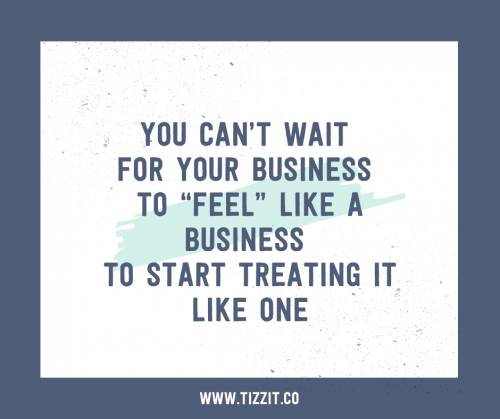
You can’t wait for your business to “feel” like a business, to treat it like one.
And so that’s what I want to address in this article, and talk to you about what it means to start thinking about yourself as a handmade business owner.

FREE WORKBOOKS, CHEAT SHEETS, AND RESOURCES TO HELP YOU START, GROW AND PROFIT FROM YOUR HANDMADE BUSINESS.
There are 3 important mindset changes that need to happen when you switch from hobby to business.
The first is an important shift in your time management.
Here’s what I mean by this. When you start thinking of yourself as a handmade business owner, you then make time for your business like you would if your business was already generating a consistent income.
Because if your business was generating daily income, you would prioritize it, right?
And when your husband, your partner, your kids, your neighbor, your mother, or the other parents at school start asking for stuff from you (can you help me put this party together? Can you take the car to the shop?), all of these things would get prioritized around this business because it would be making money.
Now I’m not saying from day one just work full time on your business, I know that’s not realistic and that you do have other responsibilities.
But you need to have time slots allocated every week that you show up for the same way you would if you were employed somewhere.
So you want to ask yourself “How much time can I realistically spend at minimum on my business each week?”
— and what I mean by “at minimum” is for example on a bad week, how much time can you spend at minimum on your business?
— the idea is not to hope for “as much as possible” or “on a good week”, but to plan for the minimum amount of time you KNOW you can at least commit to.
There is no wrong answer. Maybe your answer is 2 hours, maybe it’s 10 or 15 hours.
What is important is that you find what that is for you and then lock that into your calendar- and make sure that you show up to it the same way you would if it was a job, or if your craft business was already making money.
You may find that you can’t lock it in every week at the same time, that’s fine too. But every Sunday night you sit down and you decide when you can fit those hours in for the next week and you put it in your calendar.
And you do all of this from day one, even BEFORE you are making money. Treating your business like it’s already a successful business means showing up consistently, and doing that will in turn make your business a success.
Next I want to talk about self-discipline and something called identity goals.
And this is based – again – on the fact that you can’t wait for your business to feel like a business to treat it like one. Because if you do, the odds are … your business won’t make it.
I know it sounds harsh and that it’s a bit of a head spin – that you have to treat your business like a successful business before it is one so that it can become one. But that’s a really, really, really important mindset shift for you to make.
So – let’s talk about the layers that go into this critical mindshift, using this diagram called “The Layers of Behavioral Changes.”
The diagram comes from a beautiful book called Atomic Habits by James Clear – that I really recommend you each read by the way because it’s brilliant.
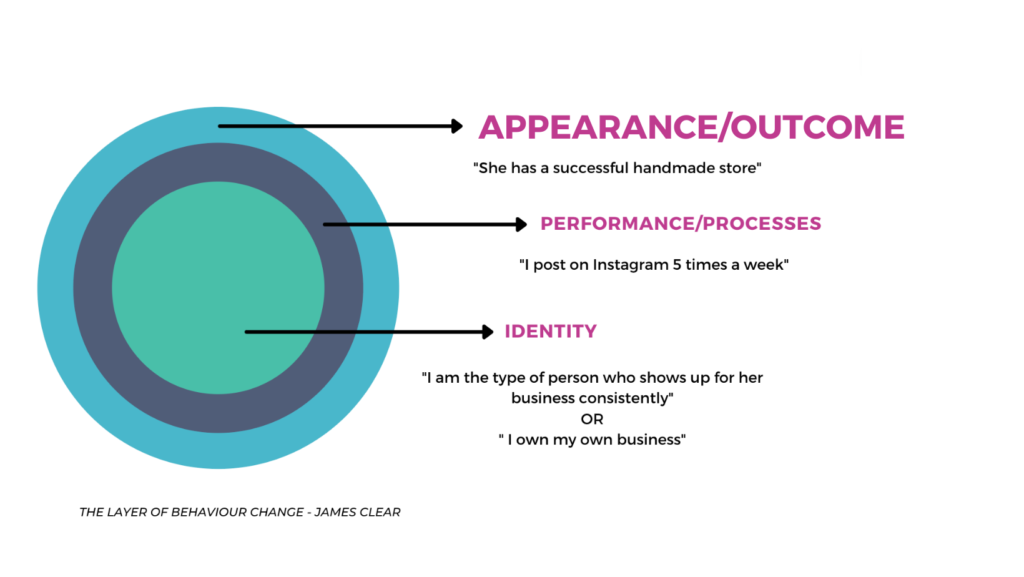
In Atomic Habits, Clear explains that there are different types of goals that we set in life and in business.
The outer layer is what he calls appearance or outcome goals.
These are goals that we set that are based on how we want the world and other people to perceive us or an outcome we want to get. So for example, people thinking , “Oh, she has a successful handmade store” or “Making $2000 a month from my shop”
Now, that is a good goal, and there is nothing wrong with having that goal. It’s also the most commonly used type of goal but the thing is, these goals are more surface level goals. They’re not tied to performance or processes, so they’re not not tied into actions that move your business ahead.
And if you are having a bad week, it’s quite easy to say “Well I don’t care if people think I’m a successful handmade business owner or not” or “well I am not making $2000 a month YET but I’ll work on it next week”.
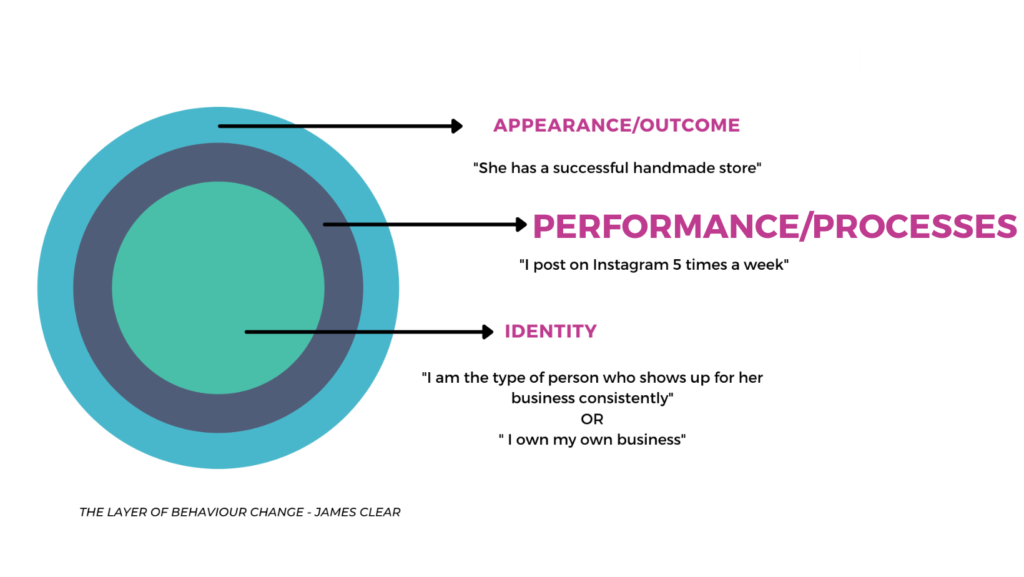
Next, we move to a deeper level of goals, which Clear calls “performance or process goals.” These are goals that are based on a thing to do. So for example: “I will post on Instagram five times a week,” or “I will comment and engage on social media three times a week.”
This layer of goals is more quantifiable, and that’s a good thing, but it’s still easy to change, like if you have a bad week you can say “Well, maybe this week since it’s a bad week I will only post on Instagram 3 times, it’s not that big a deal.”
Which brings us to the deepest layer of goals, called identity level goals.
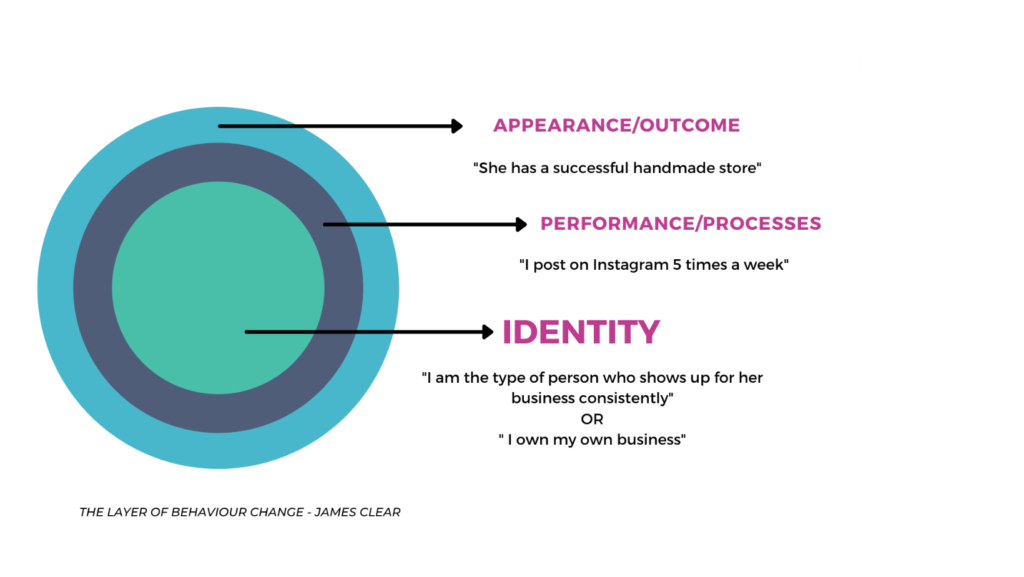
These goals are the ones that really stick and are really going to make a difference because they come from a deep, deep place within you because they are based on who you are as a person.
So your identity goal might be “I am the type of person who shows up for my business consistently.” And when you have this type of identity goal, it’s really hard not to follow up with it because the moment you don’t, you feel a breach with your identity.
If you want to think of it outside of the business world, you may have an identity goal of “I am the type of person who stays in touch with her friends” And when you start to think of yourself this way, each time you are wondering whether you should give your friend a call, you’re a lot more likely to do it, because that’s “who you are”. So the goal is actually causing you to be that kind of person.
So you can see that your identity goals are the ones that really stick and really make a difference for you. You can’t justify not reaching them as easily as the appearance and performance goals, because you would be changing how you think of yourself as a person.
Identity goals help you make that shift from “I’m going to try and sell my handmade products, let’s see what happens” to “I’m a successful handmade business owner.”
The final mindset change I want to talk about is about profit and money.
When you have a successful handmade business, you organize your finances differently.
You don’t take a little bit of money from your personal account to go to the craft store and buy some materials, make a few products and sell them on Etsy.
Instead, you separate your business and personal finances, open business bank accounts, and take legal steps to make your business an actual entity.
When you start thinking of yourself as a handmade business owner, you start thinking about money as if you have a successful handmade business already. You’re not waiting for sales to come to organise yourself and your finances… And that’s partly WHY you become successful.
Setting up accounts for your craft business and keeping business finances will do wonders in your mind to make you think and feel like your business – no matter how new it is – is a successful business already, because it all feels very real and official. And what do successful handmade business owners do with their money?
They think in terms of their business bank account, not their personal one, and the budget that they’ve created to invest in their business, and when they spend money, they don’t think of it as a pure expense but as an “investment” in their business.
And so when you make that shift from “let’s see what happens, I’m going to try and sell my products” to “I might just be getting started, but I am a committed handmade business owner” … you really start thinking about profit margin and return on any money that you invest into your business. You start thinking about your time more carefully as well because you know, time is money.
This way of thinking forces you to make smarter decisions and creates this beautiful virtuous circle, meaning smarter money decisions bring more success into your business, which results in even more smart decisions, and so on up the path to having a successful handmade business!
Making the mindset switch and thinking about yourself as a successful handmade business owner is the first step of creating your handmade business.
The second step is operating like a wonderfully busy and successful handmade business . . . which means creating systems to organize your time, batch your tasks, and more.
And that is why I created Tizzit HQ and all the step by step courses it contains. These courses make it easy to accomplish any step of handmade business ownership – from choosing what products to sell to pricing and marketing them. They help you become efficient, thorough, and most importantly – successful!
So come on over and learn more about Tizzit HQ, we’d love to have you join us!
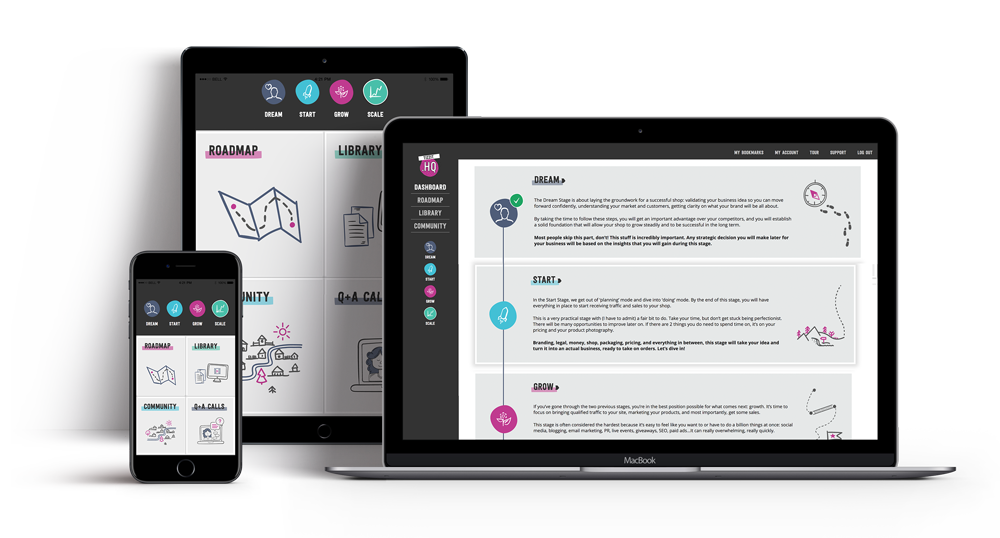
BECOME A TIZZIT HQ MEMBER AND TURN THE HOBBY YOU LOVE INTO INCOME YOU’LL ADORE
Thanks for reading, and until next time, aurevoir!
you might also like…
related articles

If you want to be found in search results on Etsy, you need to optimize your product listing for SEO. And if you want to
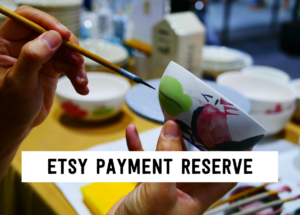
There has been a lot of talk in the Etsy community — and I mean A LOT of talk — about Etsy’s payment account reserve

Anyone who knows me knows that I am a HUGE advocate for using email marketing to grow and scale your handmade business. But you may
disclaimer
subscribe to youtube
THE LAUNCHPAD
get in touch
We acknowledge and give thanks to the Budawang and Yuin people, the Traditional Owners of the land we work and live on. We pay our respects to all Aboriginal and Torres Strait Islander Peoples and elders past, present and emerging.

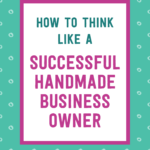

Get Instant Access to
The FULL Resource library